Double Needle Cast On

This is my favourite way to cast on these days. The long tail cast on is my ‘go to’ cast on but my cast on tension is generally tighter than my knitting tension. Originally developed by June Hemmons Hiatt, I use a variation of the Double Needle Cast On to consistently incorporate the right amount of spacing between my sts so my cast on edge is the same gauge (same width) as my knitting.
This is a video I posted on Instagram (click the image to play). I’ve referred students to this video so many times that I thought it should have its own spot on my website, so it’s easier to find.
View this post on Instagram
It’s that extra bit of yarn wrapping around the smaller, bottom needle that introduces just the right amount of space between my sts so they don’t draw in. It’s also a great stretchy cast on for socks and lace.
How to:
Use the needle size called for in your pattern (or whatever size you need to get gauge).
Set up the yarn in your hands and on the needle to cast on the way you usually do a long tail cast on. Generally you have the tail around your thumb and the yarn drawing from the ball around your index finger.
Step 1: Cast on one stitch normally. You should have your first stitch (slip knot or however you usually begin), plus one stitch, totaling two stitches on your needle.
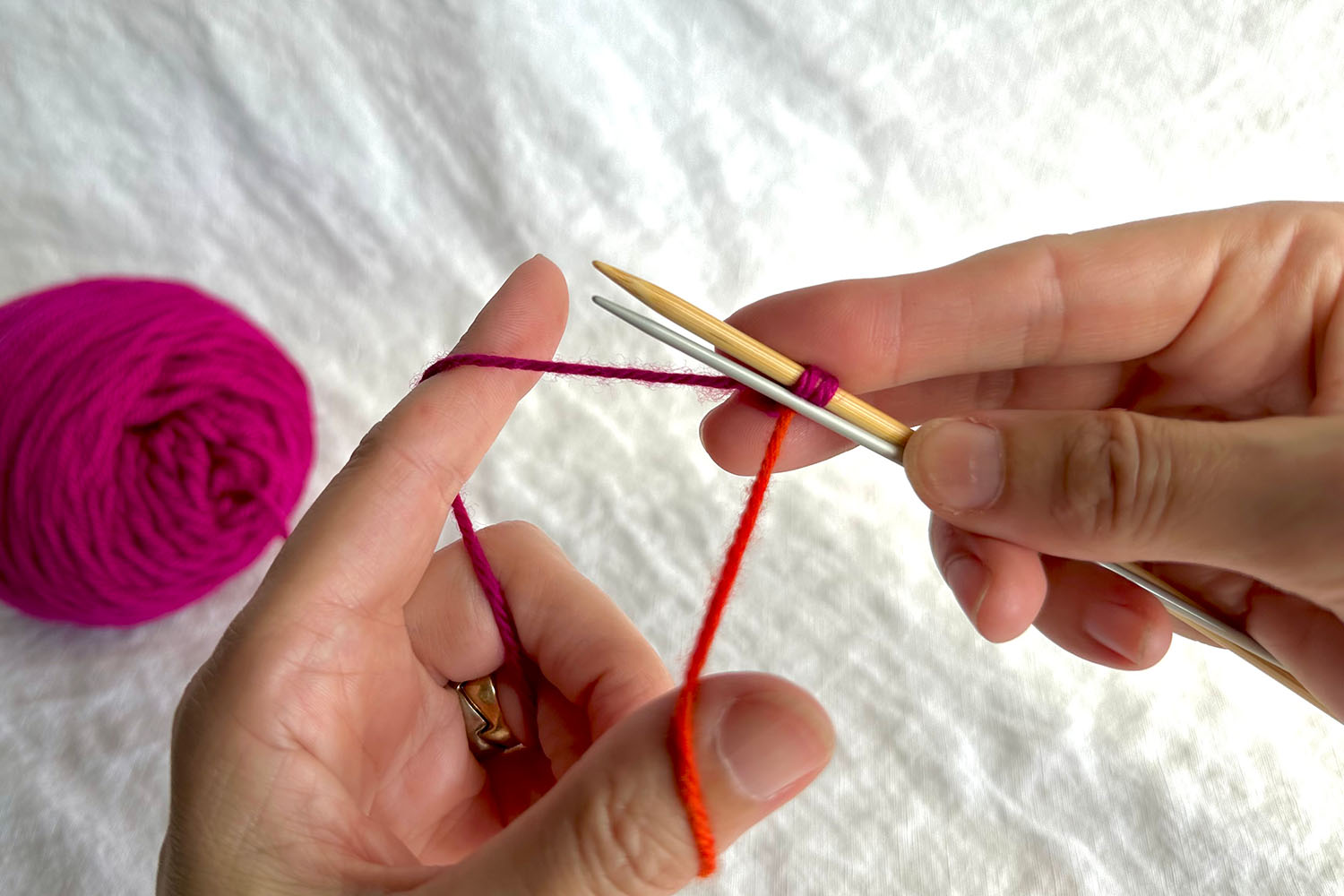
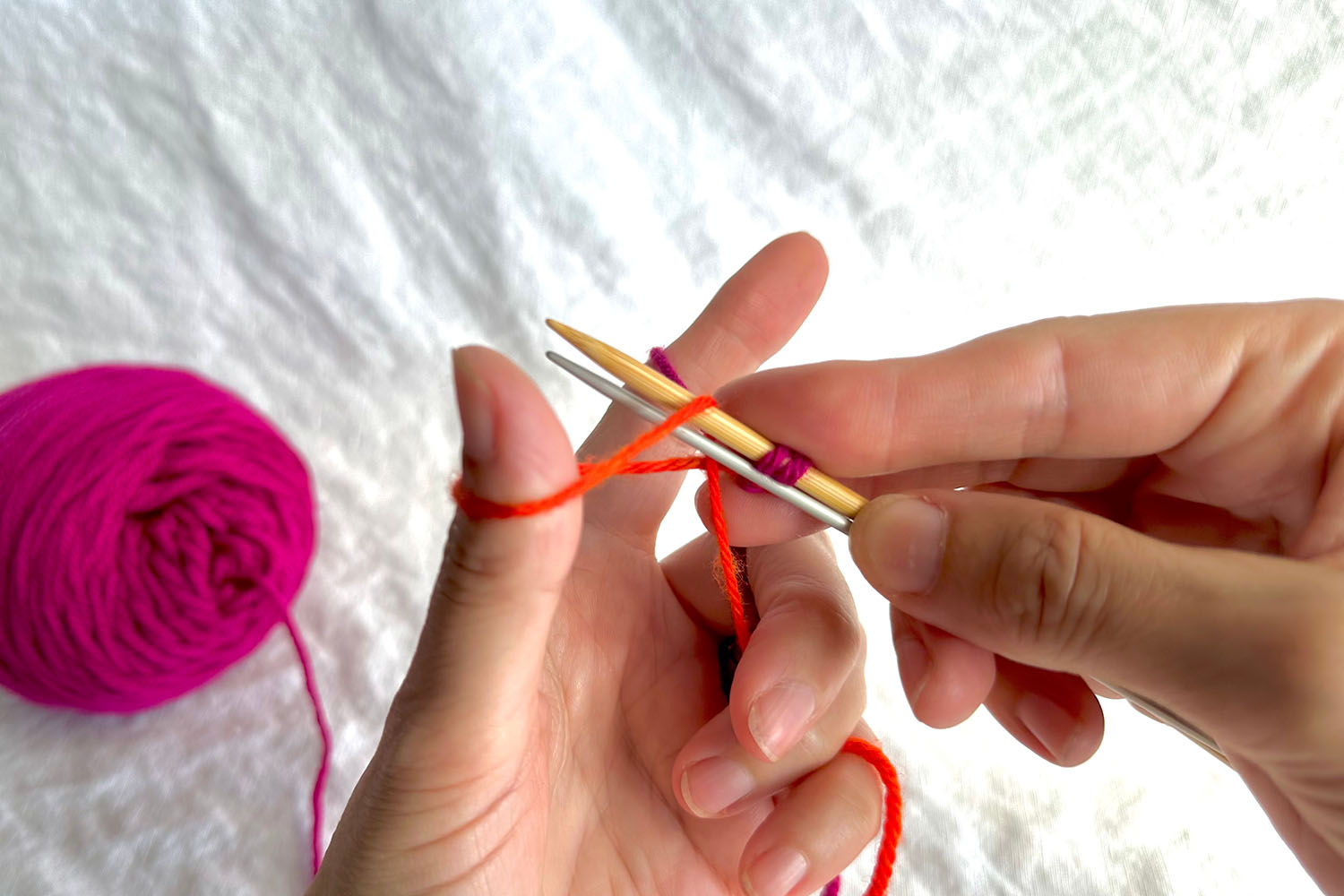
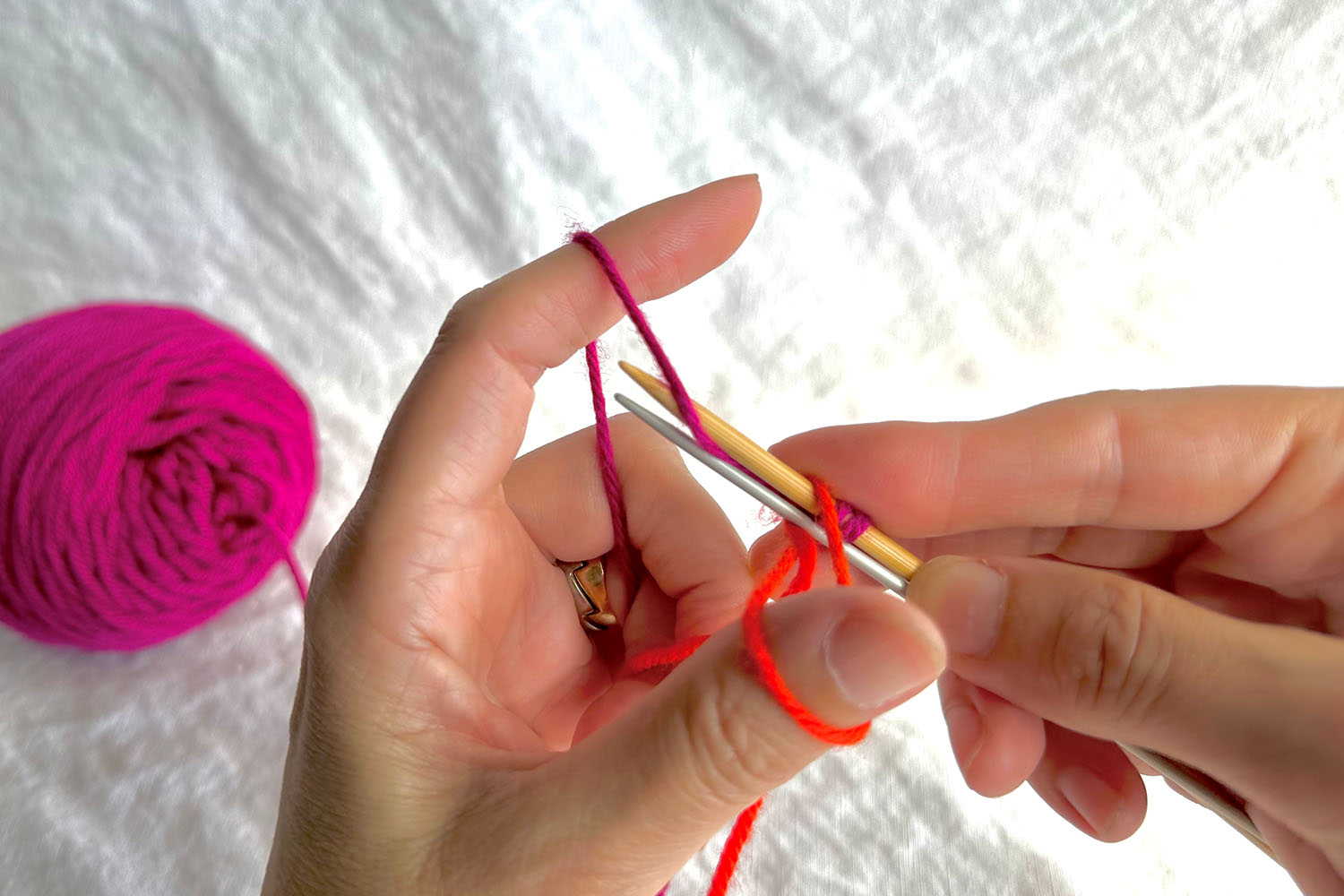
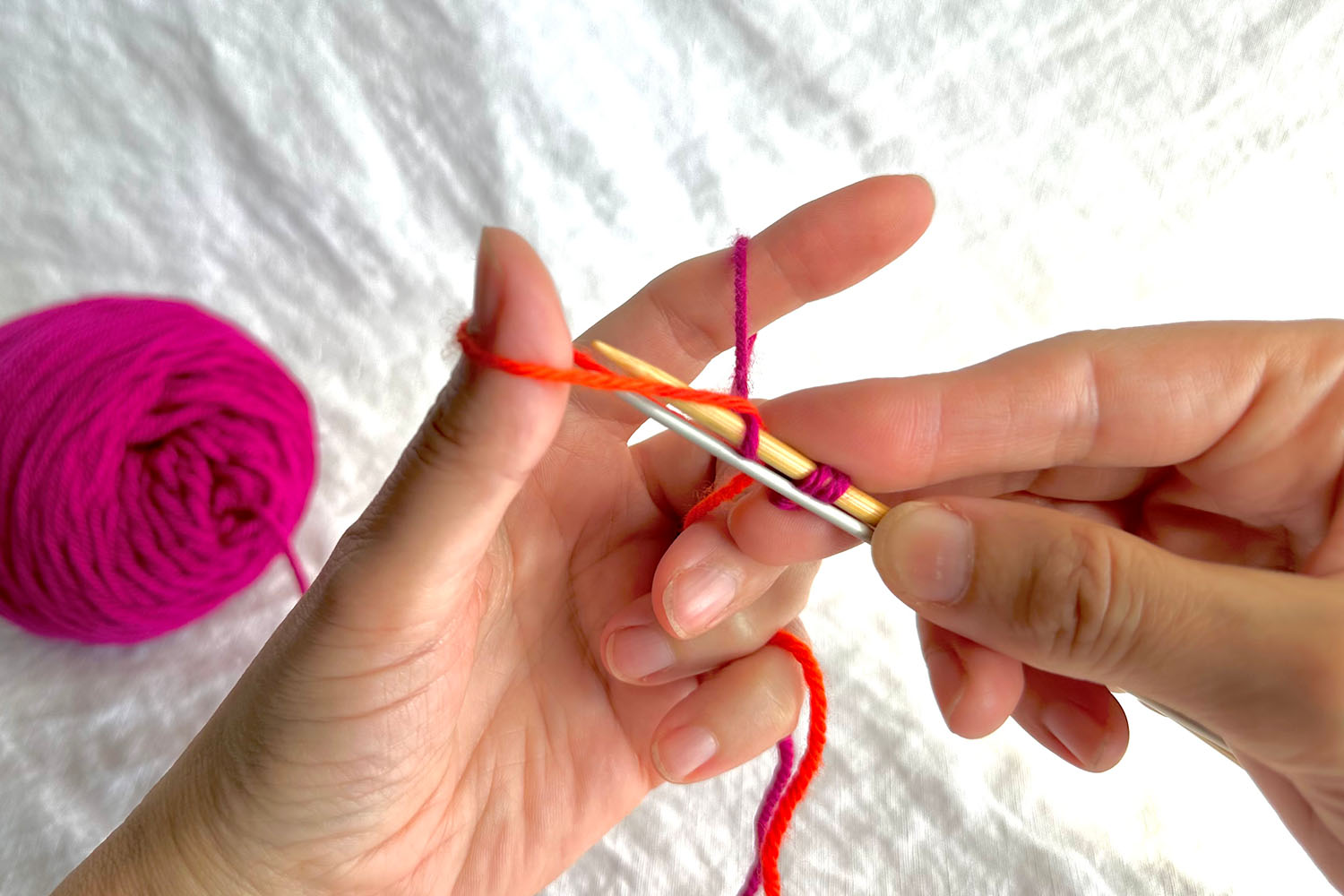
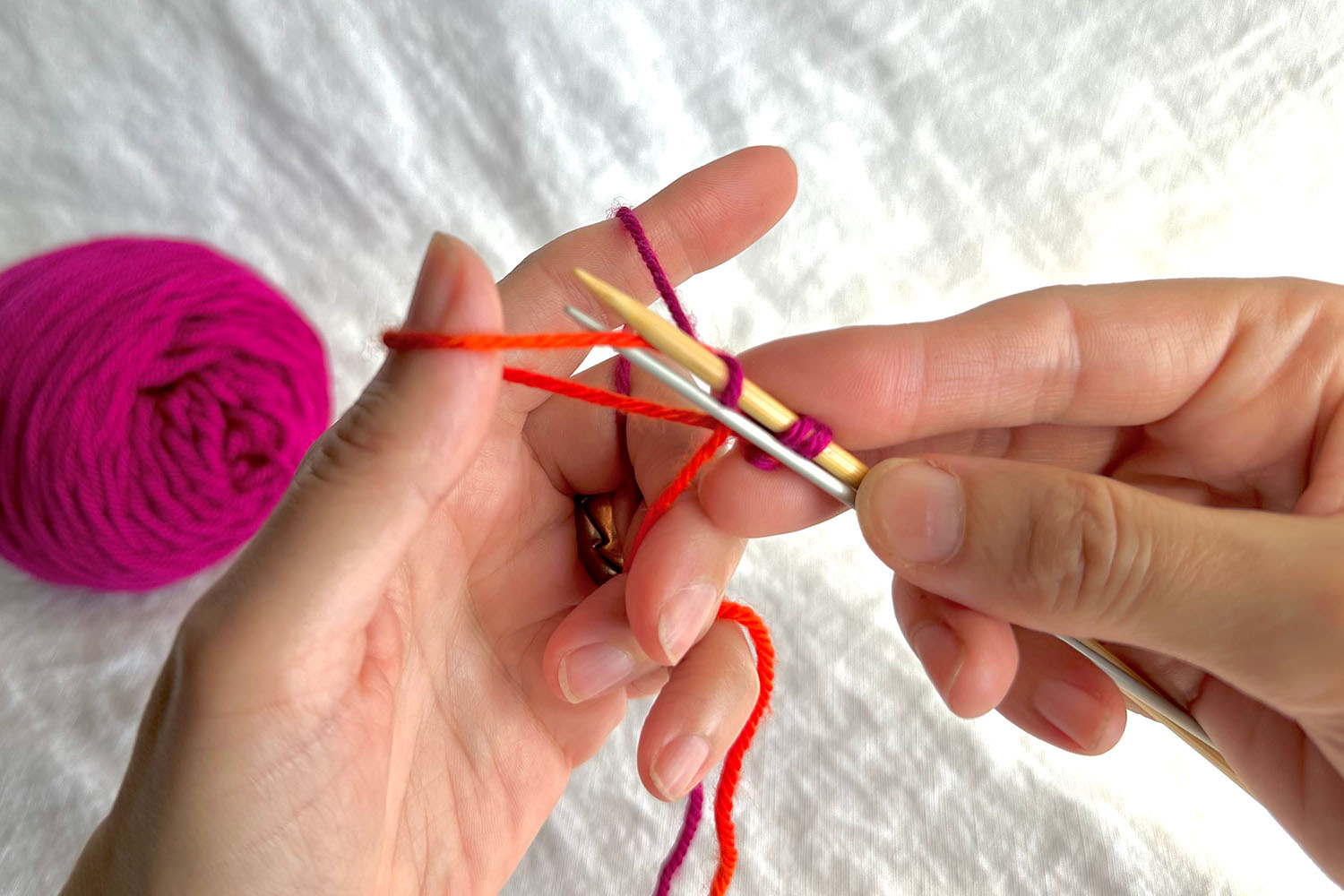
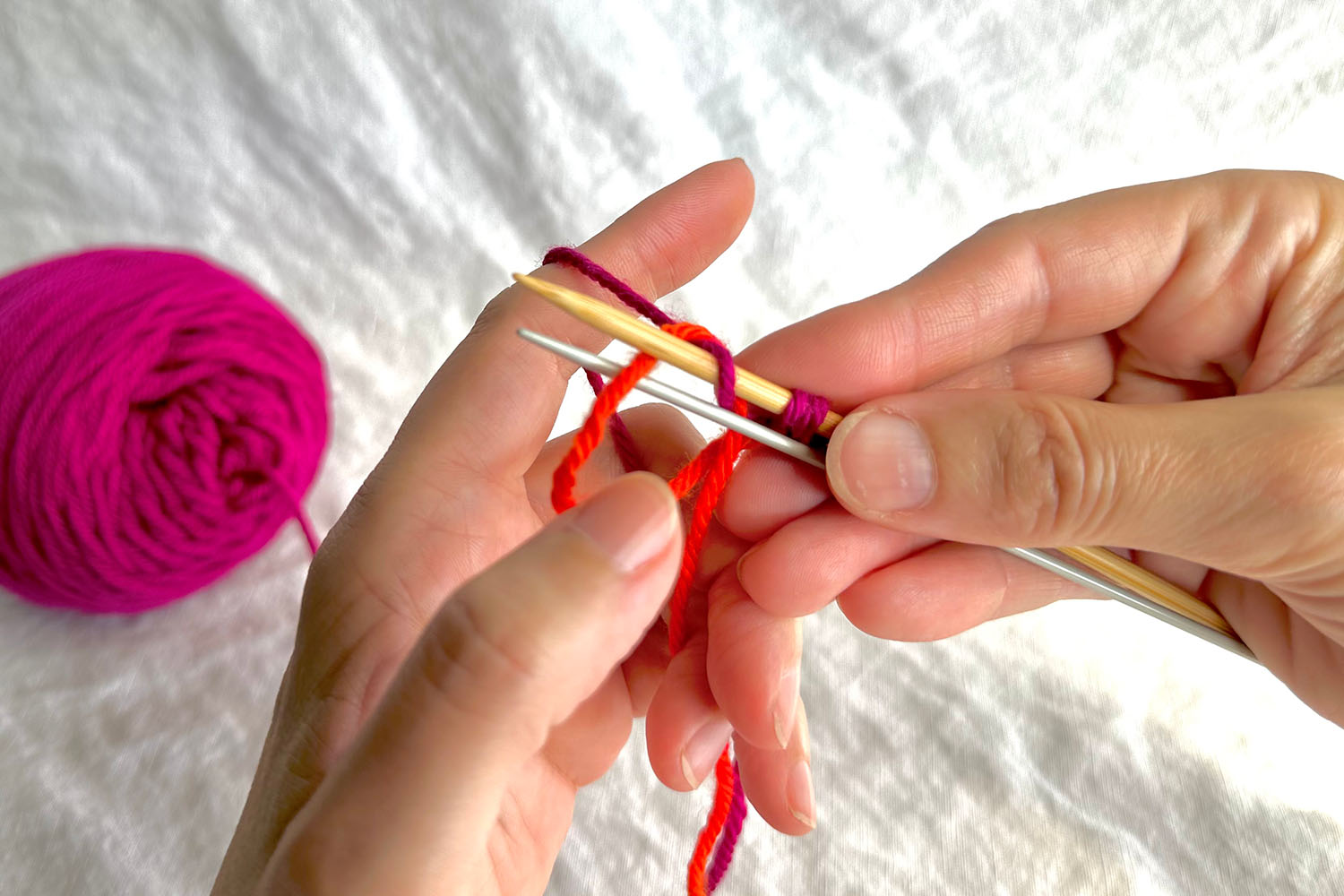
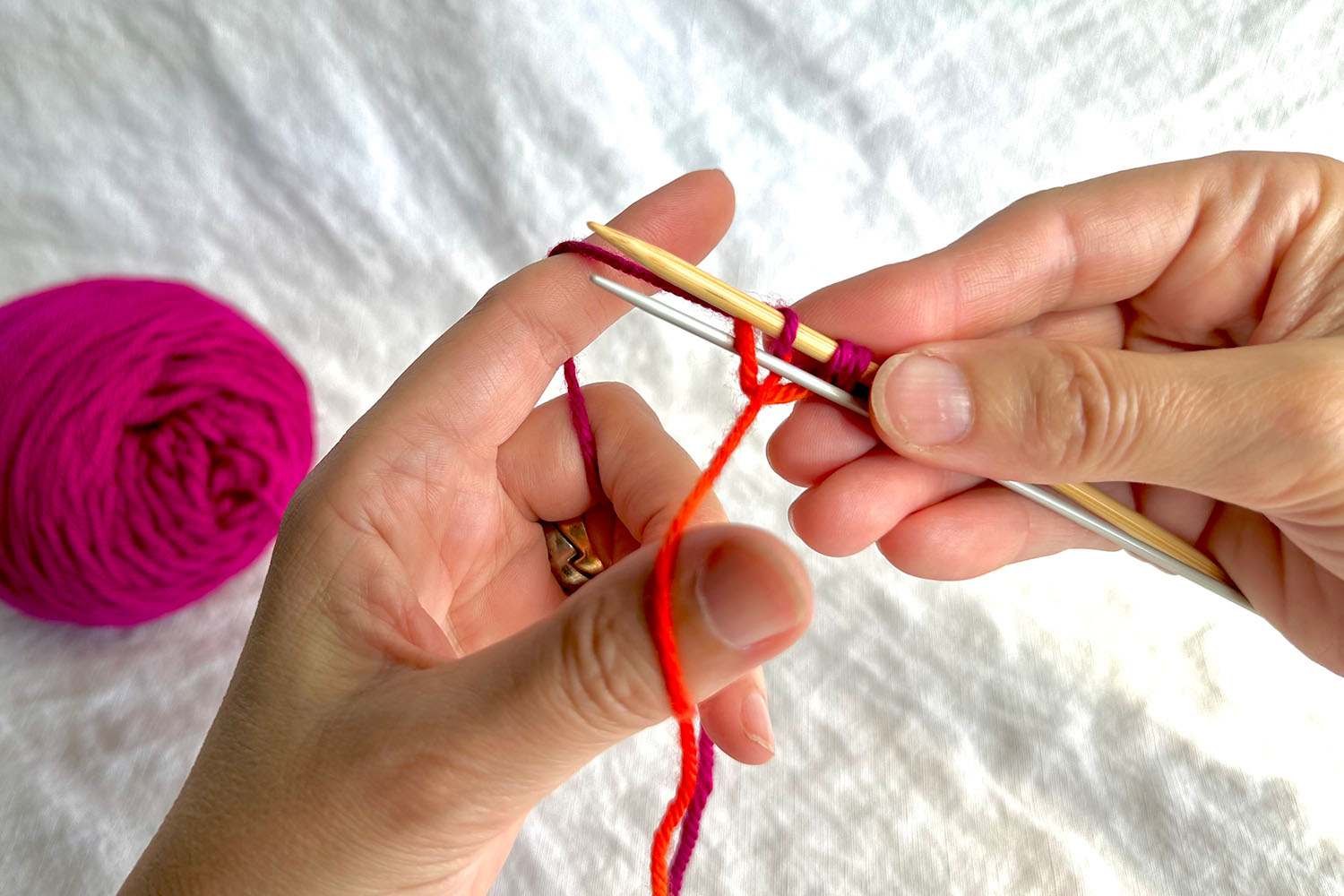
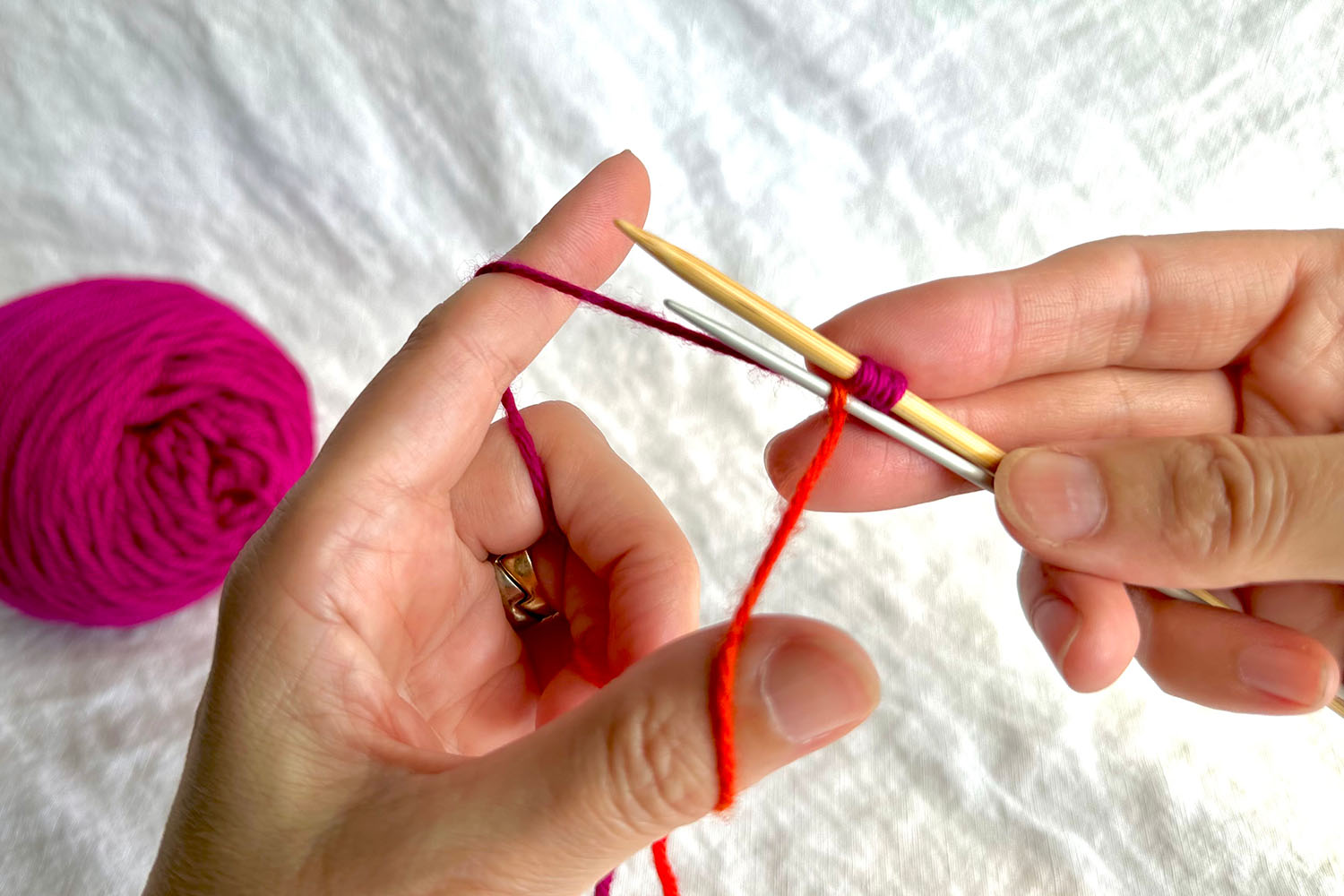
Repeat Steps 3 to 7 to cast on as many sts as you need.
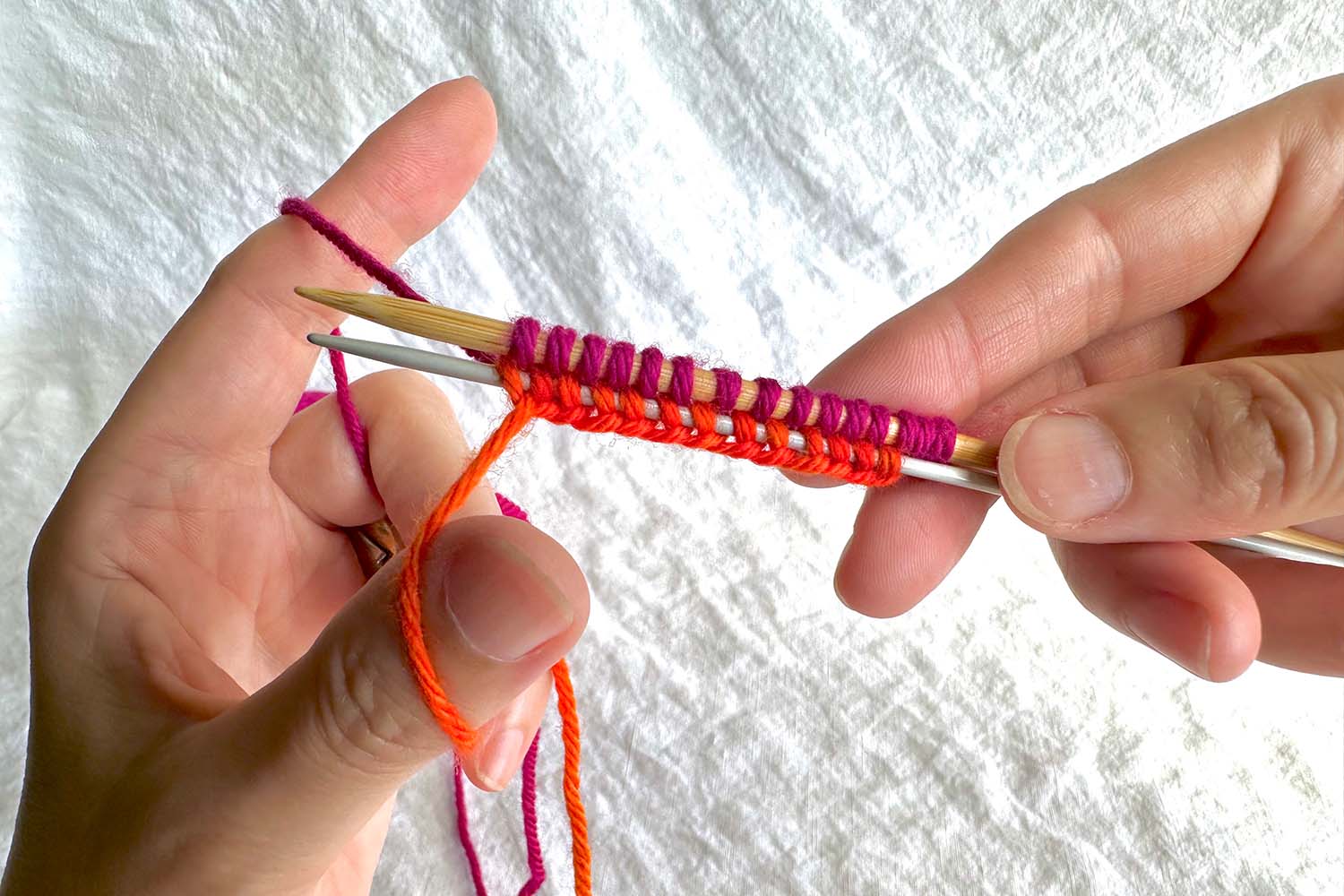
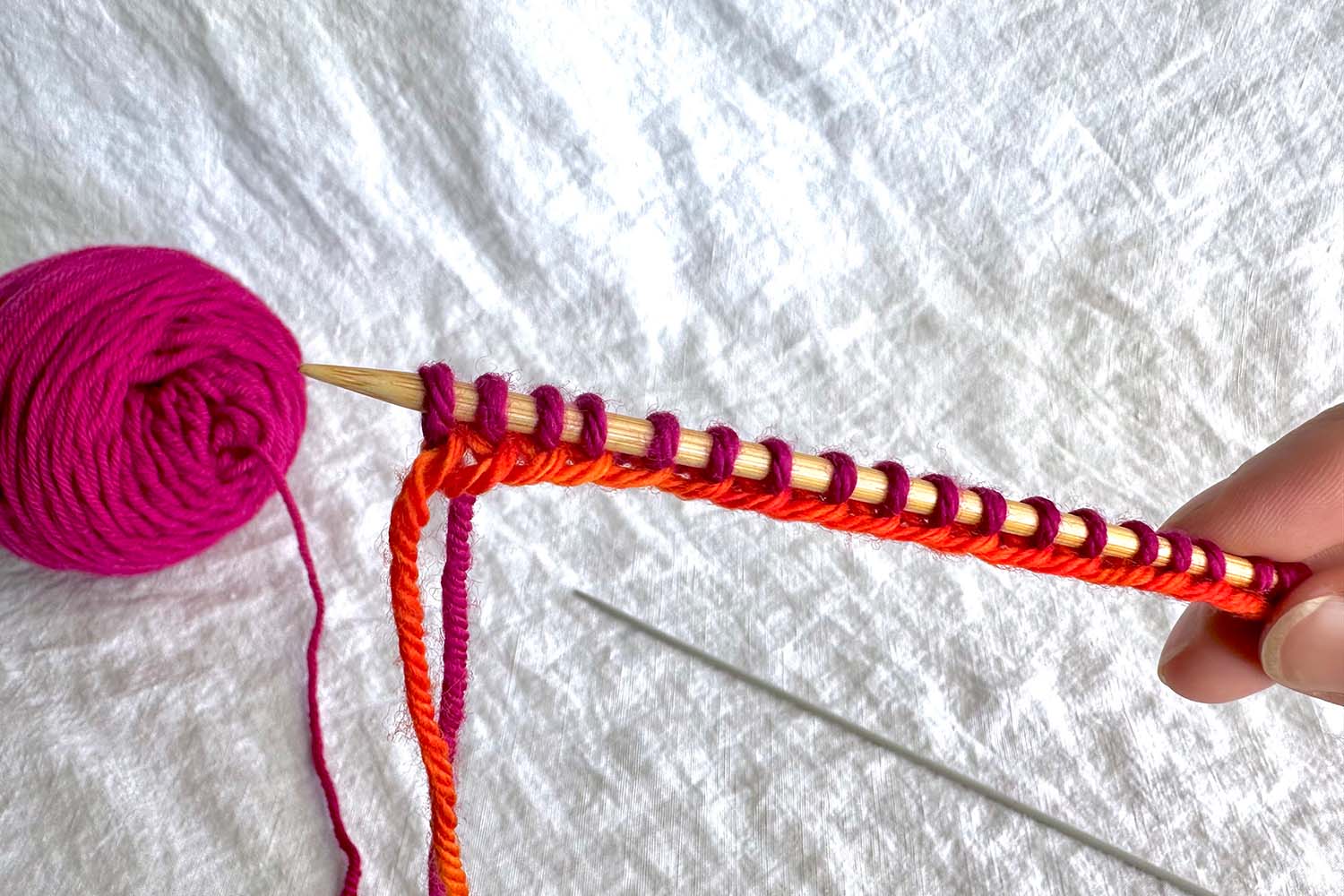
After you’ve cast on enough stitches, simply slide the smaller, bottom needle out and your cast on is complete.
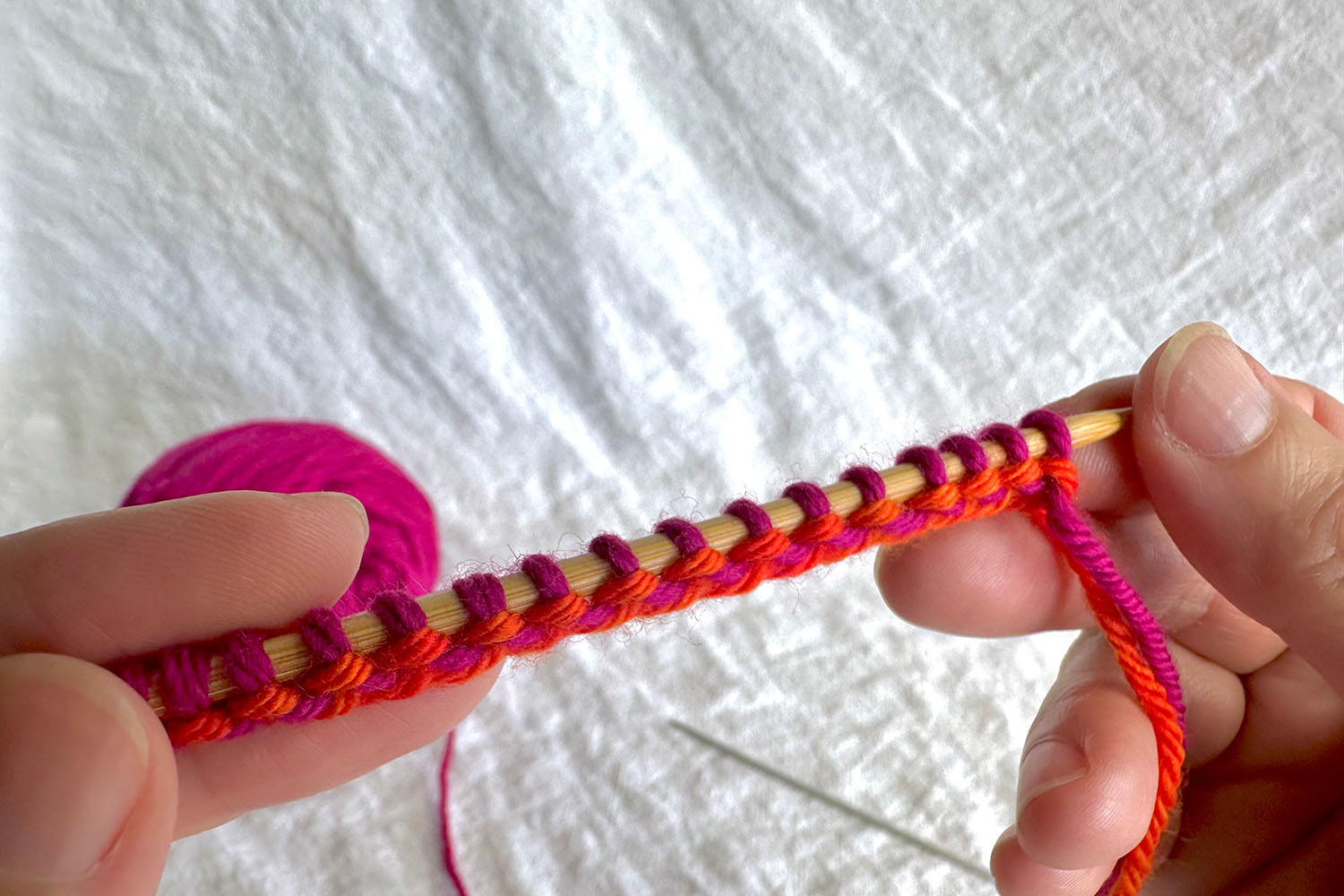
This technique allows me to adjust my tension perfectly for every yarn weight by using different sized needles for the lower needle.
What Size Needle Should You Use For The Second Needle?
It will depend on your own personal tension but here are the sizes I usually start with for the different yarn weights. As always, swatching is your friend!
- fingering >> 2 mm
- sport >> 2.25-2.75mm
- dk >> 2.75-3 mm
- worsted & aran >> 3.25-3.5 mm
- bulky >> 3.5 mm or larger





